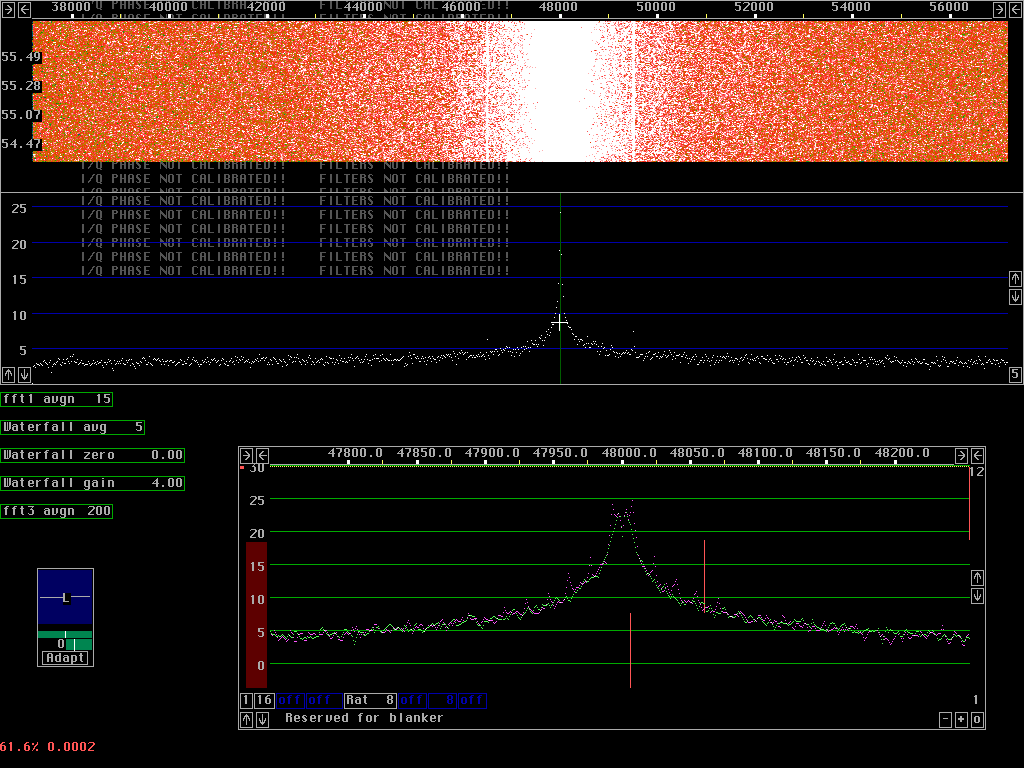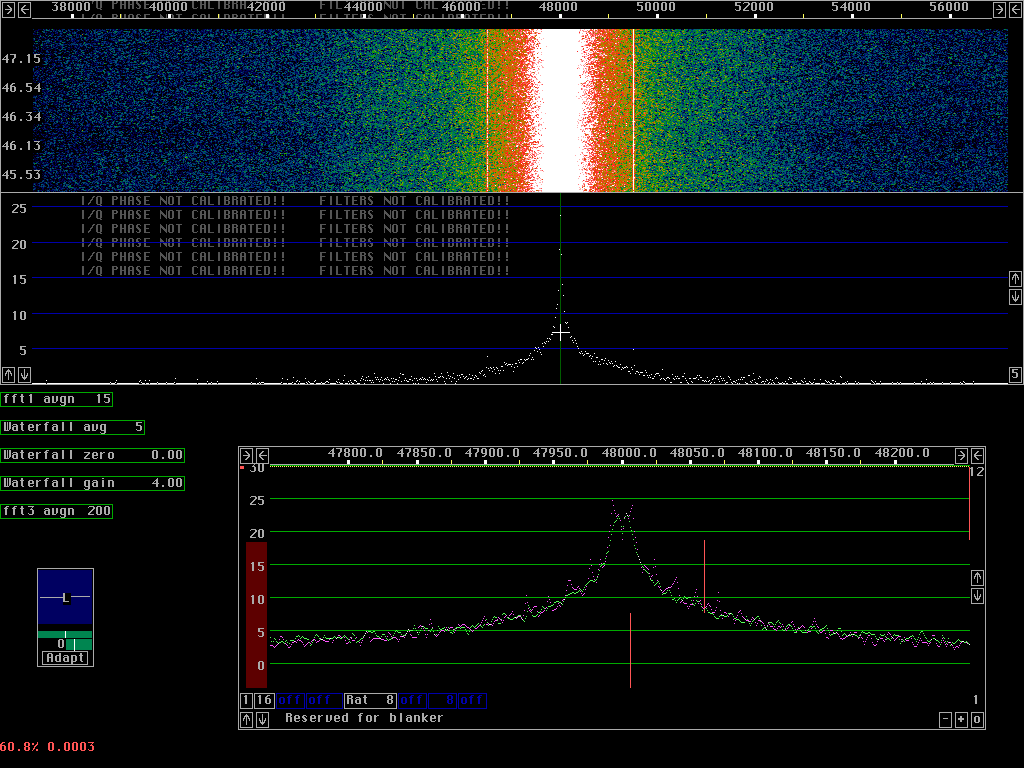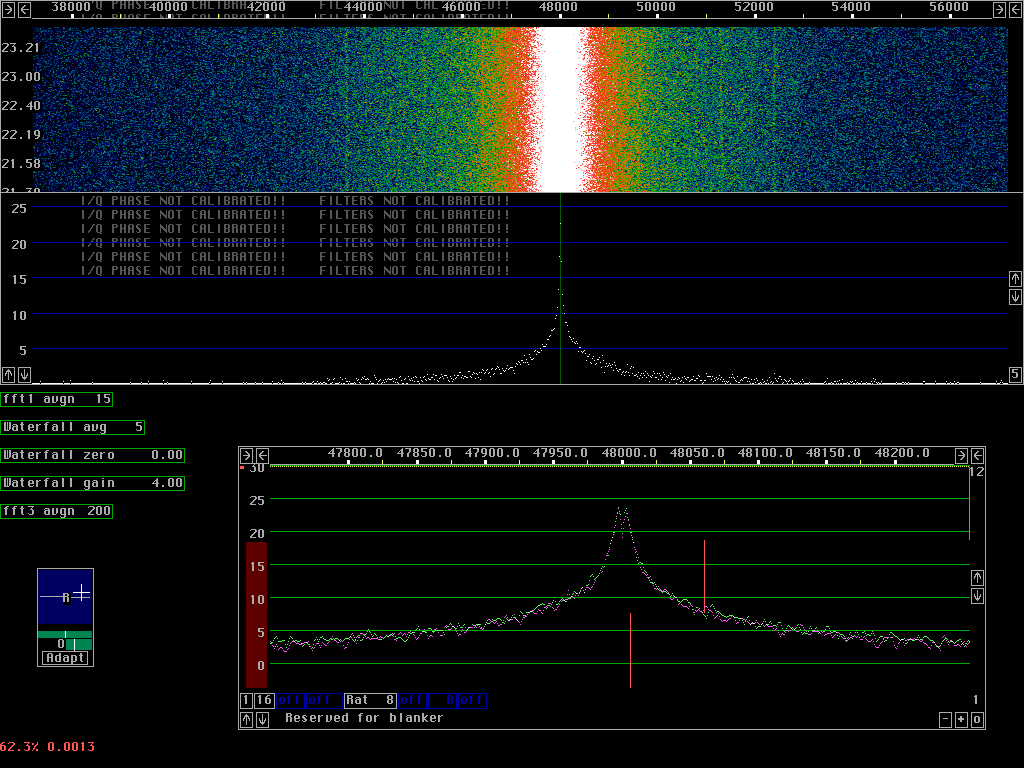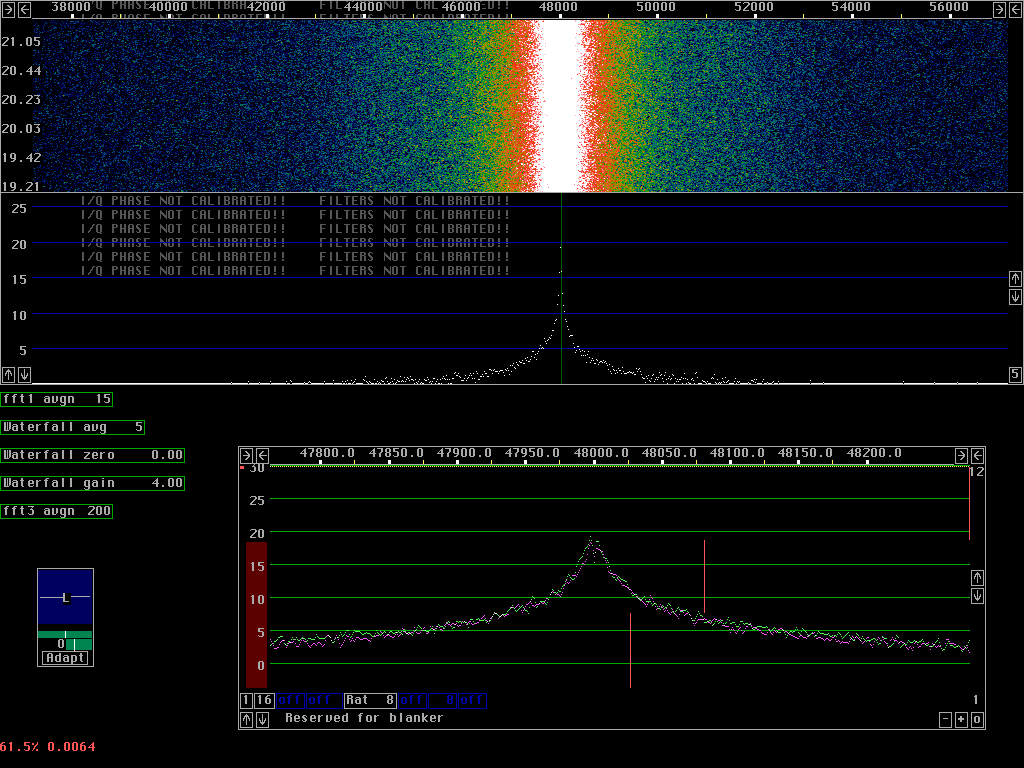|
When placing the computer in a metal box to avoid radio
interference a lot of low frequency interference, 1kHz and down
enters the Delta44 if the screen of the cable from the Delta44
is allowed to be in electrical contact with the wall of the box.
This is an indication of significant potential differences between
different parts of the (double) metal case surrounding the computer.
Some of this interference is present also when nothing is connected to the Delta44 or when the inputs are grounded right at the d-sub connector of the board. Before taking proper action to avoid currents on the screen of the audio cable I decided to try to understand how the interference reaches the input when nothing is connected and to eliminate the interference if possible. There are three different modifications which together eliminate the low frequency spurs and lower the noise floor by a little more than 3dB. When using Delta44 as the A/D converter for a software radio 3dB is a significant improvement so it is worthwile to do these simple modifications. The board is labelled M-AUDIO DELTA 1999 Rev-B Fig. 1 shows the Delta44 in its original shape. Figures 2 to 4 show the effect of the modifications when they are added one by one. Figures 1 to 4 have the same colour scale in the waterfall graph while Fig.5 shows the board in its final state, same as fig.4 but here the zero point of the waterfall graph is changed by 3dB to give a quantitative measure of the qualitative differences shown in the previous figures. The noise floor can be lowered by one more dB by bypassing the input circuitry of the Delta44. Here are some measurements on the dynamic range of modified Delta 44 showing the performance when the input amplifier/filter is still in place. |




